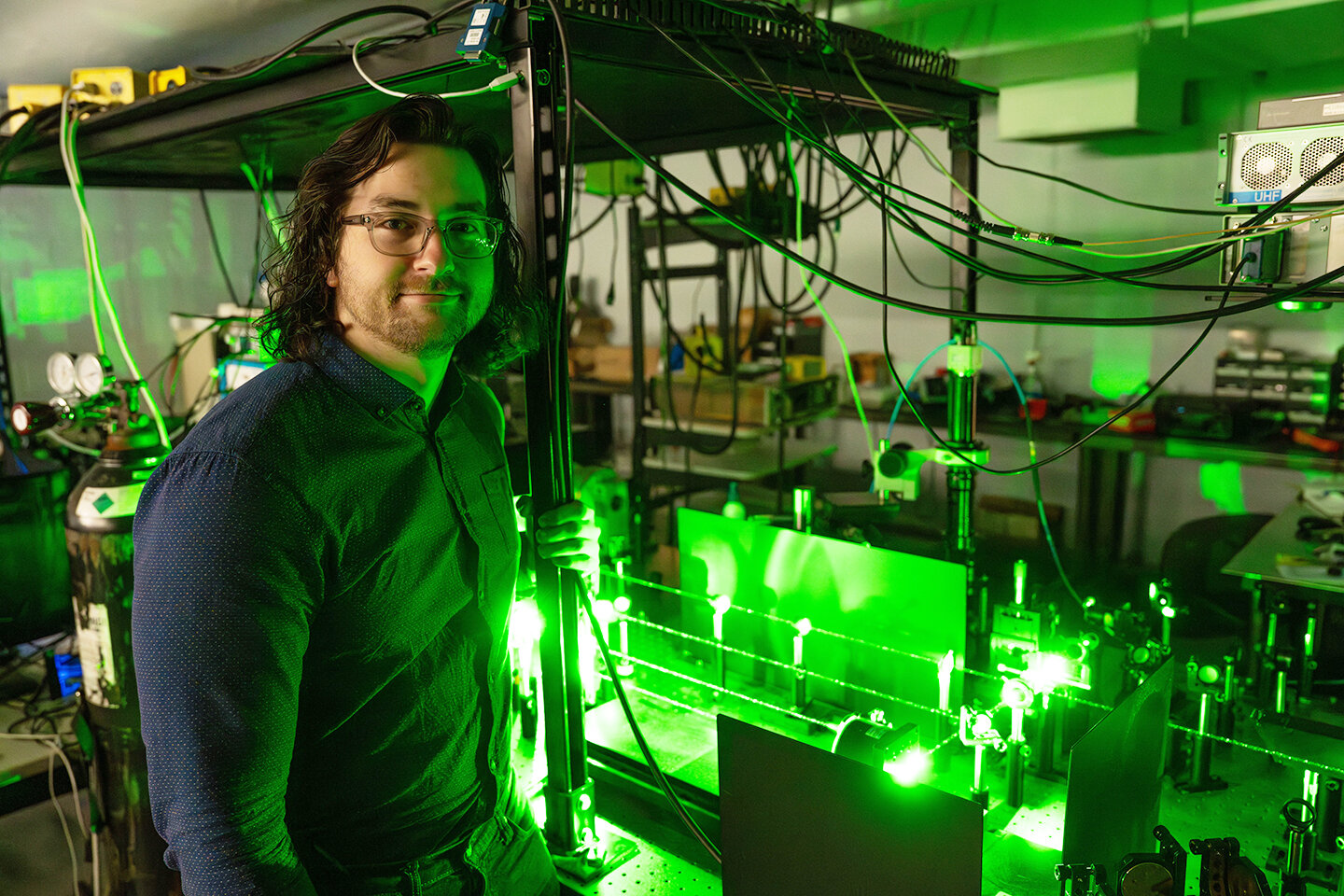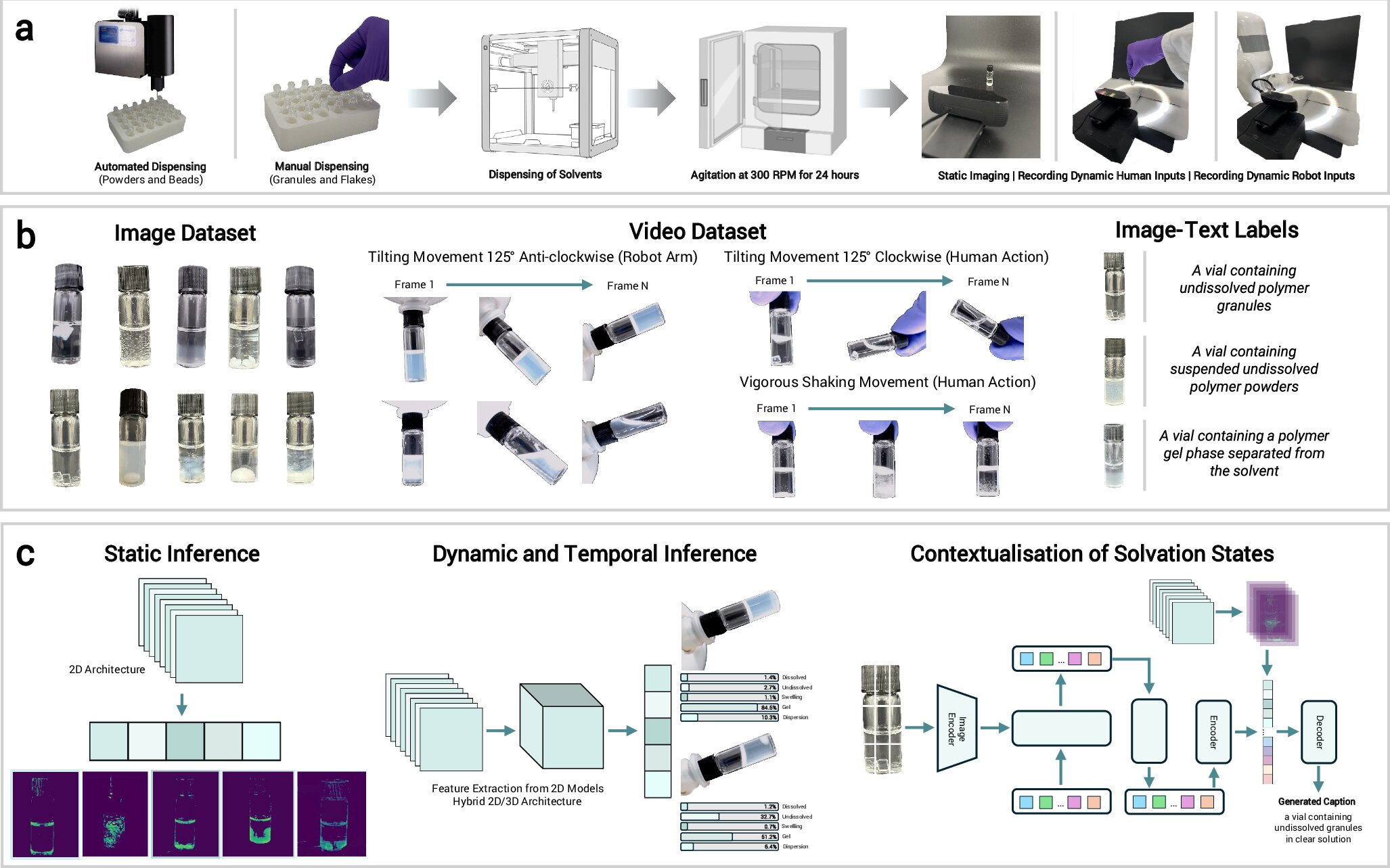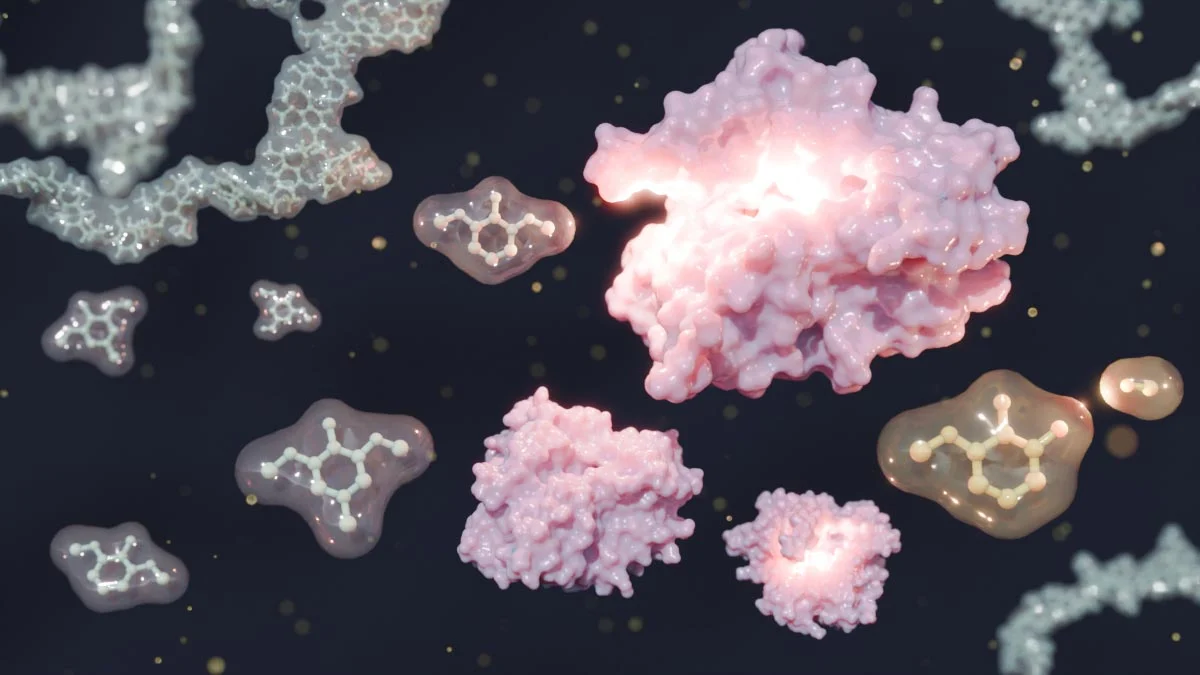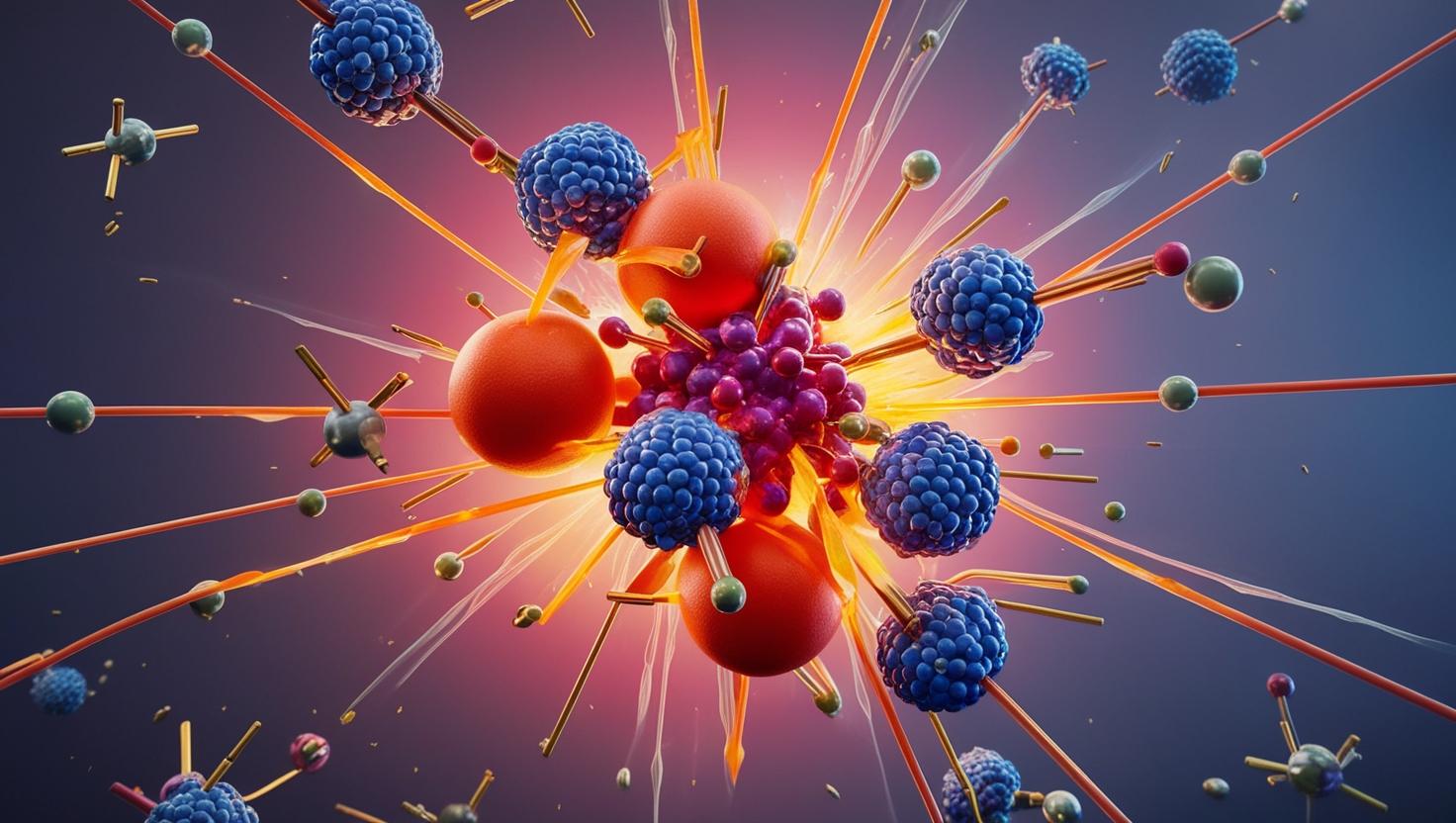Experimental screening, dataset generation, and multi-modular vision assistant. Credit: npj Computational Materials (2025). DOI: 10.1038/s41524-025-01658-7
Can a Machine Learn to ‘See’ Chemistry in Action?
Every day, polymers shape the world around us—from bioplastics and electronics to medical gels and coatings. But understanding how these long molecules interact with different solvents has long relied on tedious human analysis. Now, in a move reminiscent of teaching a robot to read dance moves, researchers at the University of Cambridge have built an AI that visually interprets polymer behavior in solvents. It doesn’t just analyze—it observes, describes, and learns.
From Swelling to Gelation: AI Watches and Learns
Led by Ph.D. researcher Zheng Jie Liew, the Cambridge team developed a parameter-efficient multi-model vision assistant that combines computer vision and natural language processing. Using convolutional neural networks and visual-language models, the AI was trained to “watch” videos of polymers in various solvents and generate captions such as “the polymer swells and forms a gel.”
This breakthrough, published in npj Computational Materials, enables scalable, real-time interpretation of physical changes—transforming what was once a subjective lab task into a consistent, automated analysis pipeline.
Research Highlights:
- The AI assistant can classify solvation outcomes (e.g., solution, gel, precipitate).
- It uses a shared visual-language encoder to connect raw video data with descriptive language.
- Researchers trained it with diverse polymer-solvent combinations to ensure generalization.
- Its captioning accuracy matched—and sometimes exceeded—human performance.
Redefining How Scientists Observe Chemistry
One of the biggest challenges in polymer chemistry is the qualitative nature of solvation behavior. Swelling or dissolving is often open to interpretation. The AI brings clarity by describing observed outcomes in standardized language. “The assistant provides fast and consistent feedback,” said Liew. “It sees what’s happening and turns it into structured data we can analyze.”
This vision assistant also supports active learning, where the AI improves over time by interacting with new data. This could transform fields like fusion energy development or bioengineered tissue design, where rapid material discovery is vital.
Future Applications and Ethical Vision
The researchers envision integrating the AI into robotic lab platforms—where machines not only perform experiments but also evaluate them independently. The fusion of vision-language understanding marks a critical step toward autonomous science. As AI models increasingly inform real-world decisions, maintaining interpretability and ethical transparency remains crucial.
Professor Alexei Lapkin, the senior author, believes the research bridges chemical engineering, machine learning, and computer vision in a novel way: “This assistant doesn’t just automate—it augments the way we understand matter.”
Explore More AI and Materials Breakthroughs
If you’re fascinated by how AI is changing science, don’t miss our article on turning carbon waste into construction materials—or how researchers are striving to bottle the power of the sun through fusion. These innovations reveal a future where data and discovery go hand in hand.
Original Research Paper
DOI: 10.1038/s41524-025-01658-7
What Do You Think?
Could vision-capable AI become the lab partner of the future? Share your thoughts in the comments—and explore more breakthroughs in AI-powered materials science.










